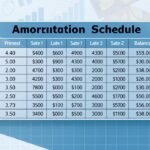Loan disbursement is a crucial phase in the lending process, marking the moment when the approved funds are released to the borrower. Understanding this process can help borrowers navigate their financial obligations and ensure they meet the requirements of their loans. Below is a comprehensive step-by-step overview of the loan disbursement process.
Step 1: Loan Application

The journey begins when the borrower submits a loan application. This document includes personal information, financial history, and the purpose of the loan. Lenders evaluate this application to determine the borrower’s eligibility based on creditworthiness and income.
Step 2: Loan Approval
Once the application is submitted, the lender reviews the borrower’s credit score, income, employment status, and debt-to-income ratio. If the borrower meets the lender’s criteria, the loan is approved. The lender will then present a loan agreement detailing the terms and conditions, including the interest rate, repayment schedule, and any fees.
Step 3: Signing the Loan Agreement
After the loan is approved, the borrower is required to sign the loan agreement. This document outlines the responsibilities of both parties, including repayment terms, interest rates, and any collateral requirements. It is essential for borrowers to read and understand all terms before signing.
Step 4: Conditions Precedent
Before disbursement can occur, the lender may require certain conditions to be met. This might include:
- Providing additional documentation (e.g., proof of insurance, appraisal reports).
- Meeting specific credit requirements or debt obligations.
- Completing necessary inspections or legal checks.
Step 5: Loan Disbursement Request

Once all conditions are satisfied, the borrower or lender may initiate the loan disbursement request. This request prompts the lender to prepare for the release of funds.
Step 6: Fund Transfer
The lender processes the loan disbursement request and transfers the approved funds to the borrower. This transfer can occur in various forms:
- Direct deposit: Funds are deposited directly into the borrower’s bank account.
- Check: A physical check is issued to the borrower.
- Wire transfer: Funds are sent electronically, often used for larger amounts or specific purposes (like purchasing a home).
Step 7: Confirmation of Disbursement

After the funds are transferred, the lender provides a confirmation of disbursement. This document serves as proof that the funds have been released and may detail how much was disbursed and any fees associated with the transaction.
Step 8: Repayment Begins
Depending on the loan type, repayment may begin immediately or after a grace period. Borrowers should be aware of their repayment obligations and ensure they understand the payment schedule and methods available.
Also Read: The Role of Artificial Intelligence in Personalizing Loan Offers
Conclusion
Understanding the loan disbursement process is vital for borrowers as it helps manage expectations and responsibilities. By following these steps, borrowers can better prepare for the financial implications of their loans and ensure a smooth transaction. Always read the fine print and consult with financial advisors if needed, to make informed decisions throughout the lending process.
FAQs
1. How long does it take for a loan to be disbursed after approval?
The time it takes to disburse a loan can vary, but it typically ranges from a few hours to several days, depending on the lender’s processes and any required conditions.
2. Can I change the loan disbursement method after approval?
It depends on the lender’s policies. Some lenders may allow changes to the disbursement method, while others may not. It’s best to check with your lender as soon as possible.
3. What happens if I don’t meet the conditions for disbursement?
If you do not meet the required conditions, the lender may delay or deny disbursement. You may need to provide additional documentation or rectify issues before funds can be released.
4. Are there any fees associated with loan disbursement?
Yes, lenders may charge fees for processing the loan or for specific disbursement methods. It’s important to review your loan agreement for details on any applicable fees.
5. Can I receive only part of the approved loan amount?
Yes, some lenders allow borrowers to draw only a portion of the approved amount, especially in the case of home equity lines of credit (HELOCs) or certain personal loans. Always clarify your options with your lender.






